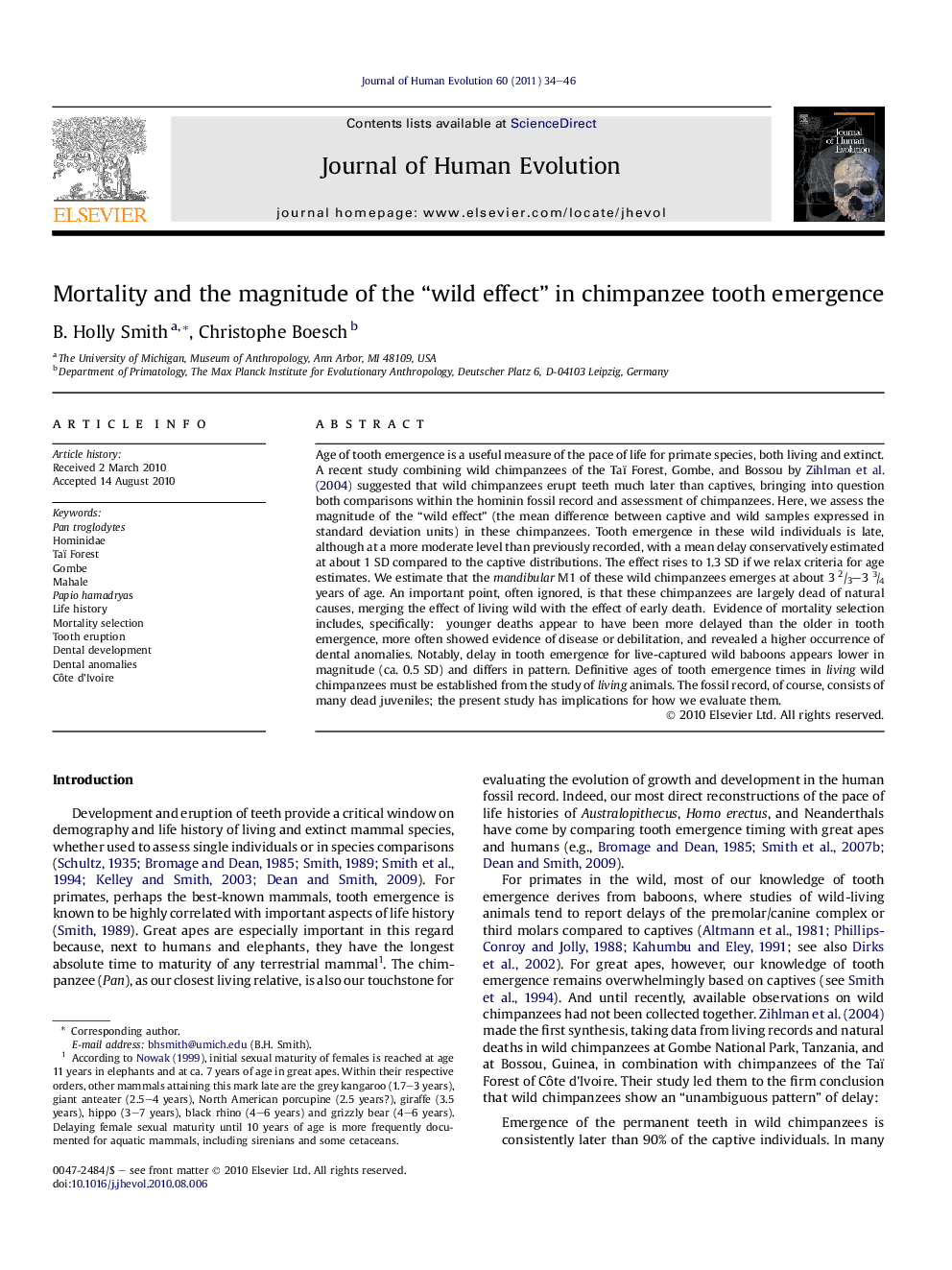| کد مقاله | کد نشریه | سال انتشار | مقاله انگلیسی | نسخه تمام متن |
|---|---|---|---|---|
| 4556718 | 1329499 | 2011 | 13 صفحه PDF | دانلود رایگان |

Age of tooth emergence is a useful measure of the pace of life for primate species, both living and extinct. A recent study combining wild chimpanzees of the Taï Forest, Gombe, and Bossou by Zihlman et al. (2004) suggested that wild chimpanzees erupt teeth much later than captives, bringing into question both comparisons within the hominin fossil record and assessment of chimpanzees. Here, we assess the magnitude of the “wild effect” (the mean difference between captive and wild samples expressed in standard deviation units) in these chimpanzees. Tooth emergence in these wild individuals is late, although at a more moderate level than previously recorded, with a mean delay conservatively estimated at about 1 SD compared to the captive distributions. The effect rises to 1.3 SD if we relax criteria for age estimates. We estimate that the mandibular M1 of these wild chimpanzees emerges at about 3 2/3–3 ¾ years of age. An important point, often ignored, is that these chimpanzees are largely dead of natural causes, merging the effect of living wild with the effect of early death. Evidence of mortality selection includes, specifically: younger deaths appear to have been more delayed than the older in tooth emergence, more often showed evidence of disease or debilitation, and revealed a higher occurrence of dental anomalies. Notably, delay in tooth emergence for live-captured wild baboons appears lower in magnitude (ca. 0.5 SD) and differs in pattern. Definitive ages of tooth emergence times in living wild chimpanzees must be established from the study of living animals. The fossil record, of course, consists of many dead juveniles; the present study has implications for how we evaluate them.
Journal: Journal of Human Evolution - Volume 60, Issue 1, January 2011, Pages 34–46